‘Species of Spaces’ (2014) by Nathan Gray.
An acoustic tour of Cockatoo Island, using found objects as percussive tools to strike against the industrial built-environment there.
‘Species of Spaces’ (2014) by Nathan Gray.
An acoustic tour of Cockatoo Island, using found objects as percussive tools to strike against the industrial built-environment there.
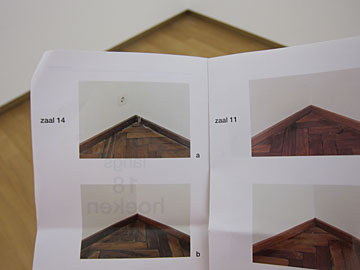
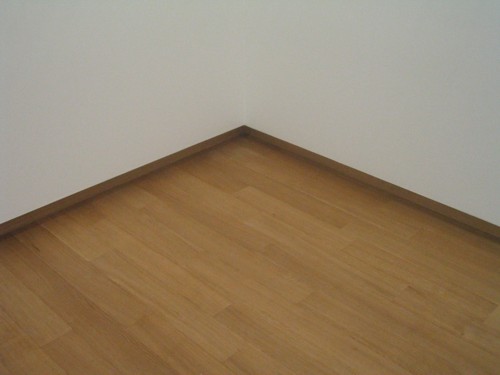
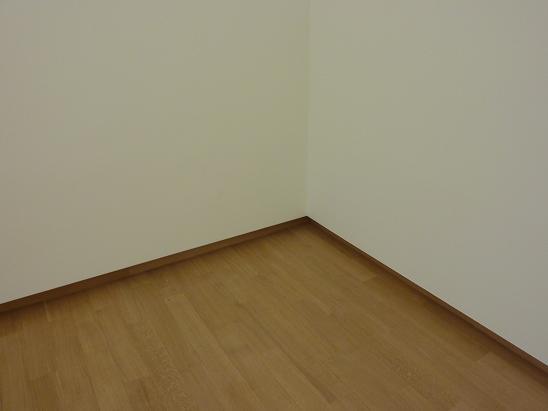
Willem de Rooij, ‘Route langs 18 hoeken’ (Route Along 18 Corners) (1993)
A brochure setting out a route along 18 corners of galleries and exhibition spaces on the ground floor of the Stedelijk Museum building. The work was made before the building was renovated from 2004 – 2012 and depicts floors and walls that have since changed.
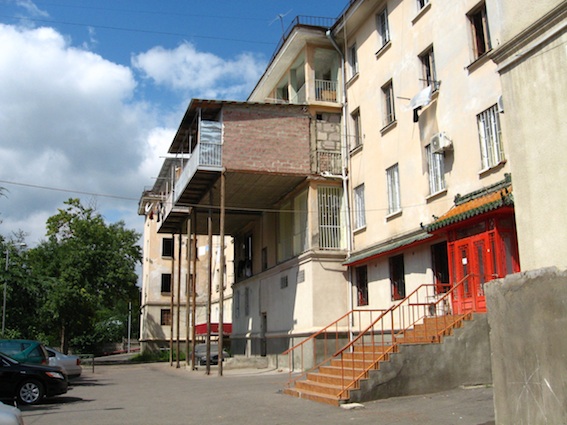
Photograph by Levan Asabashvili.
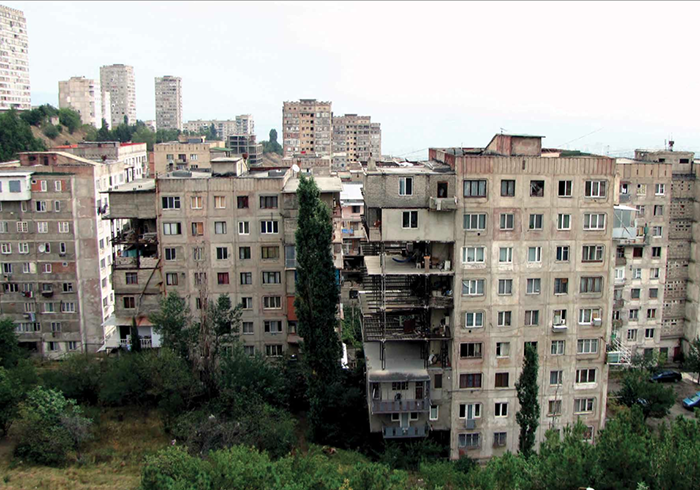
Photograph by Krzysztof Weglel.
Some examples of informal structures called “kamikaze loggias”, the vernacular extensions of modernist buildings characteristic of Tbilisi. These extensions have been created since the 1990s as an organic response to the new, “lawless” times after the fall of the Soviet Union. They increase the living space and are usually used as terraces, extra rooms, open refrigerators, etc.
It is said that a Russian journalist named them “kamikaze”, drawing a parallel between the romantic and suicidal character of such an endeavour and the typical ending of most Georgian family names “-adze”. This architecture also refers back to the local palimpsestic building technique, which since the Middle Ages has allowed new houses to be built on top of existing ones on the steep slopes of the Caucasus Mountains thus not monumentalising the past but expanding on it for the future.
Read more about the Georgian Pavillion at the 2013 Venice Architecture Biennale here.

Ottoman miniature from the Surname-i Vehbi (‘Book of Festival’, an album with illustrations depicting celebrations), showing the Column with the three serpent heads, in a celebration at the Hippodrome in 1582.